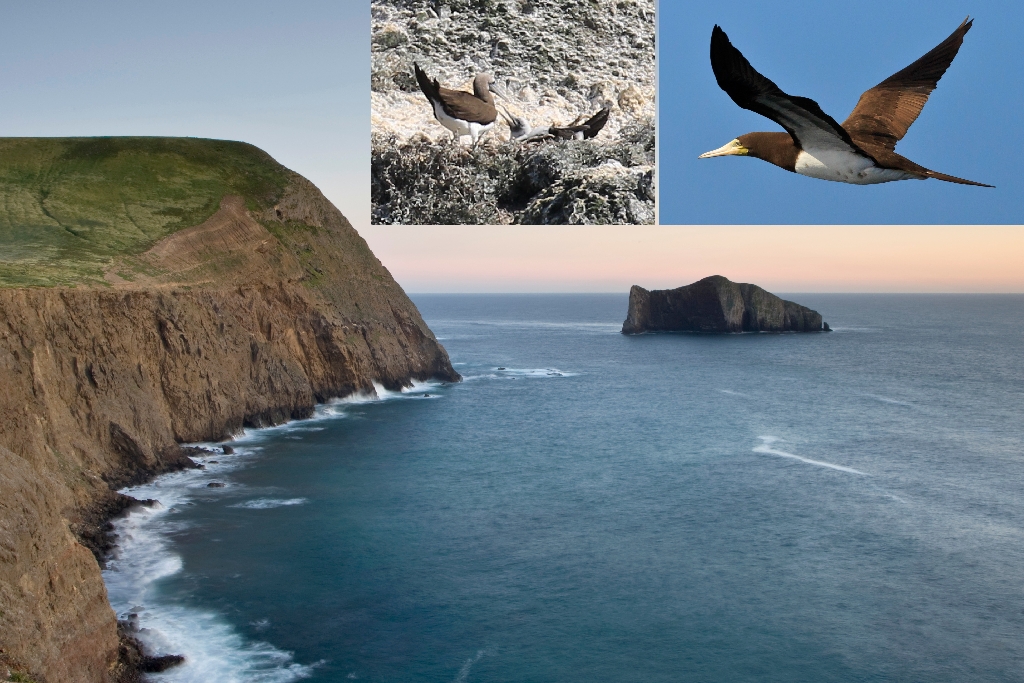
Sutil Island is a 13-acre rocky islet that rises to 301 feet. It is located .4 miles off the island's southwest coast.
It is named by the Geographic Board for the ship, Sutil, of the Dionisio Alcalá Galiano (1760-1805) Spanish expedition of 1792. Galiano was sent by the viceroy of New Spain, Juan Vicente de Güemes, Count of Revillagigedo to explore and claim the Pacific coast of North America north of California. He sailed in the schooners Sutil and Mexican a from San Blas, Mexico. This expedition went as far as the Strait of Georgia between Victoria and the British Columbia mainland, looking for the Northwest Passage. Afterwards Alcalá Galiano wrote an account in which he claimed no such passage existed. It is located 0.4 miles southwest of Santa Barbara Island.
The island is an important wildlife habitat, particularly for seabirds. On August 24, 2019, seabird biologists with Channel Islands National Park and the California Institute for Environmental Studies confirmed the first record of a brown booby chick from an active nest on Sutil Rock off Santa Barbara Island.
This successful nest signifies a northward expansion of their known breeding range in the Gulf of California and along the Pacific coast of Mexico. The closest current breeding colony is located on the Coronado Islands off Northern Baja California, Mexico.
Brown boobies, once considered a rare visitor to the Channel Islands, were observed only 16 times in the 30 years between 1984 and 2014. They were first seen roosting in small numbers on Anacapa and Santa Barbara Islands in 2013. There was a dramatic rise in their numbers in 2015 with over 170 individuals observed at Santa Barbara Island. Since that time, they have been seen consistently on both islands with fewer sightings occurring on Anacapa Island.
"Seabirds rely upon the rich marine resources and the isolation of these offshore islands to provide food and undisturbed nesting grounds safe from predators," said Channel Islands National Park Superintendent Ethan McKinley. "With this successful brown booby nest, there are now 14 breeding seabirds that rely upon this vital habitat."
Brown boobies, generally considered a tropical or subtropical bird, appear to have been extending their range northward since the 1990s when they first migrated to the Coronado Islands of Baja California from the Gulf of California and Pacific coast of Mexico. This expansion of their range coincides with shifts in oceanic conditions with warmer waters and changes in prey availability.
An impressive seabird species, brown boobies are known for making spectacular plunge dives from heights of up to 50 feet to feed on surface fish. They nest on islands, lay their eggs on the bare ground, and make nests with sticks, rocks, bones, and vegetation to protect them. They winter far out to sea.
Worldwide, brown booby populations have declined due to habitat degradation on islands where introduced predators have reduced their nesting success.
Is there something we missed for this itinerary?
Itineraries across USA


















































